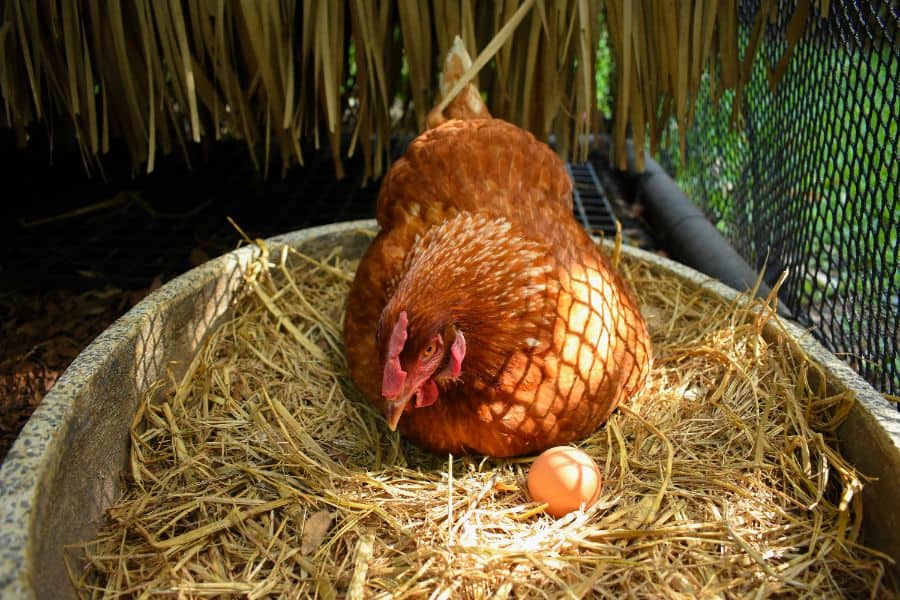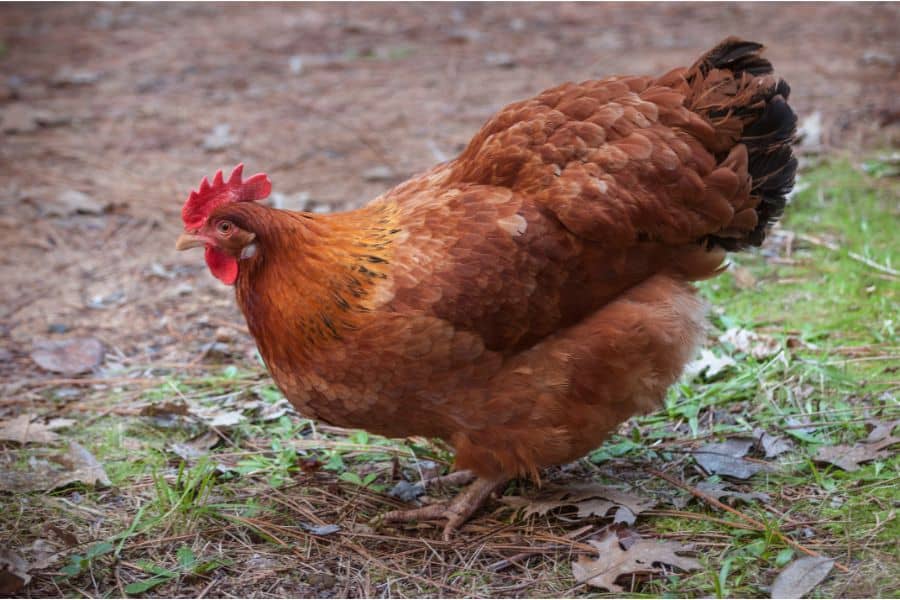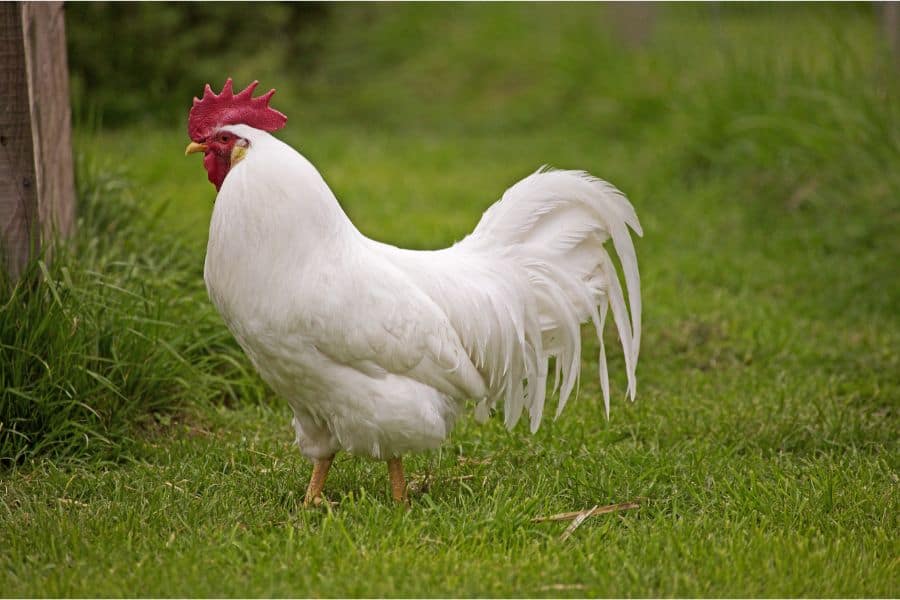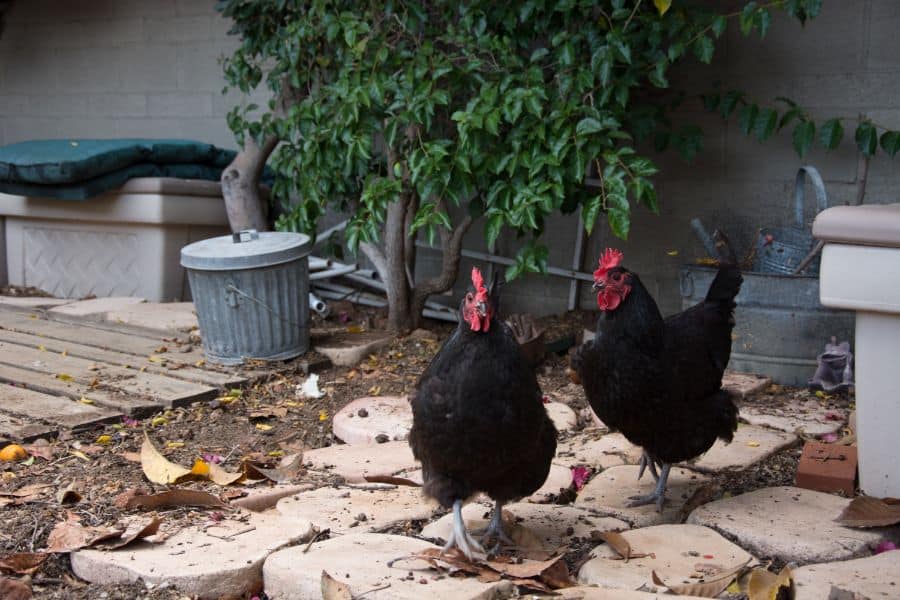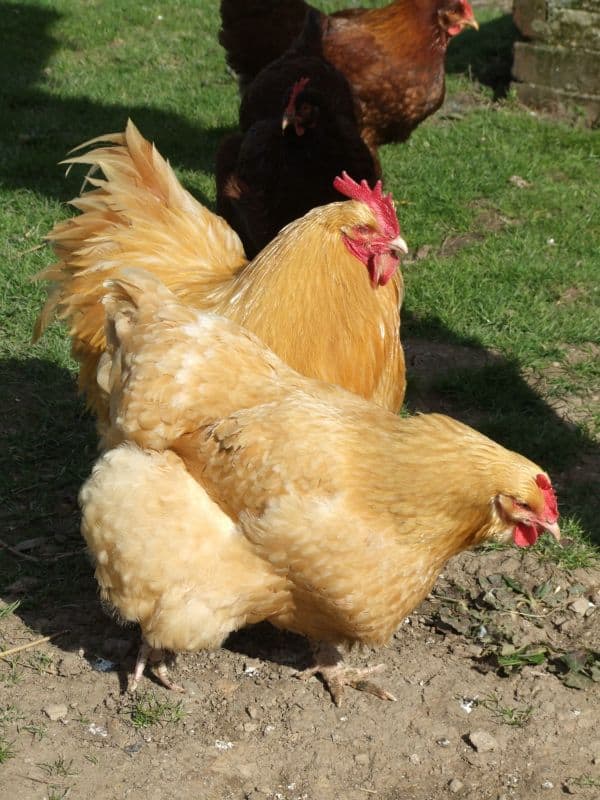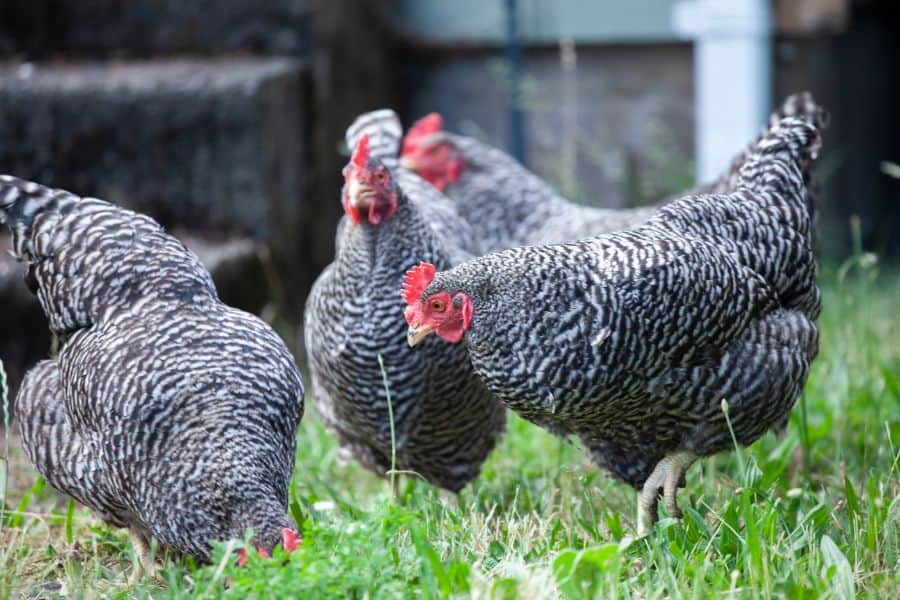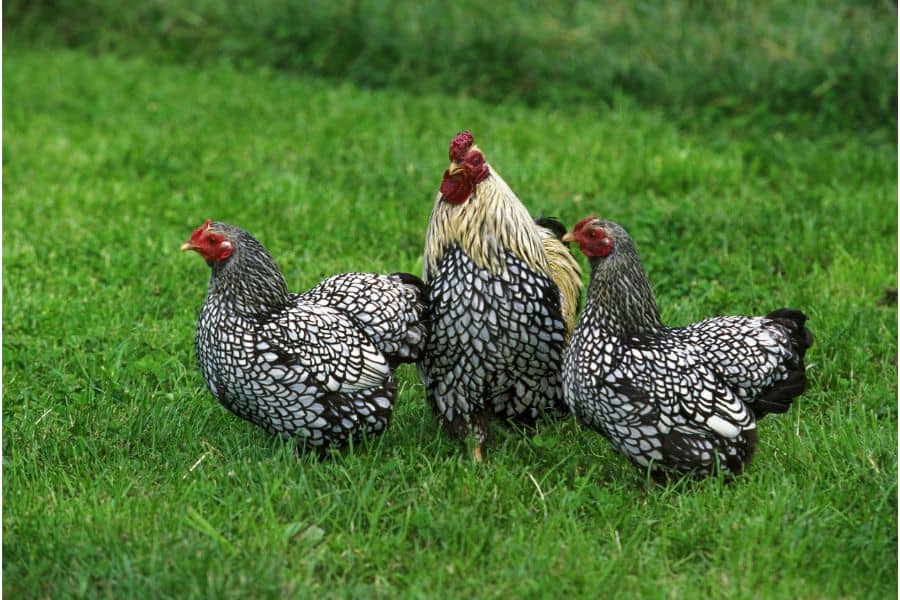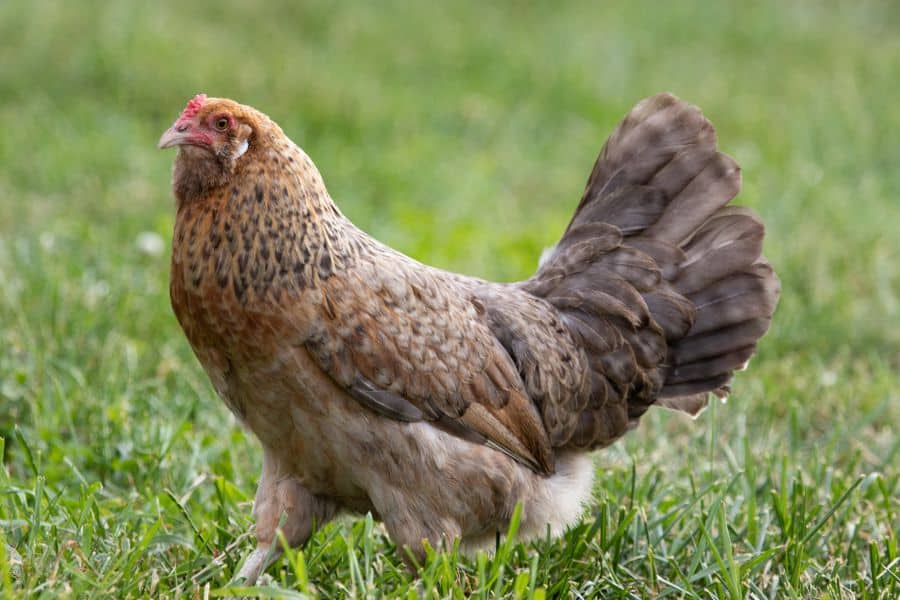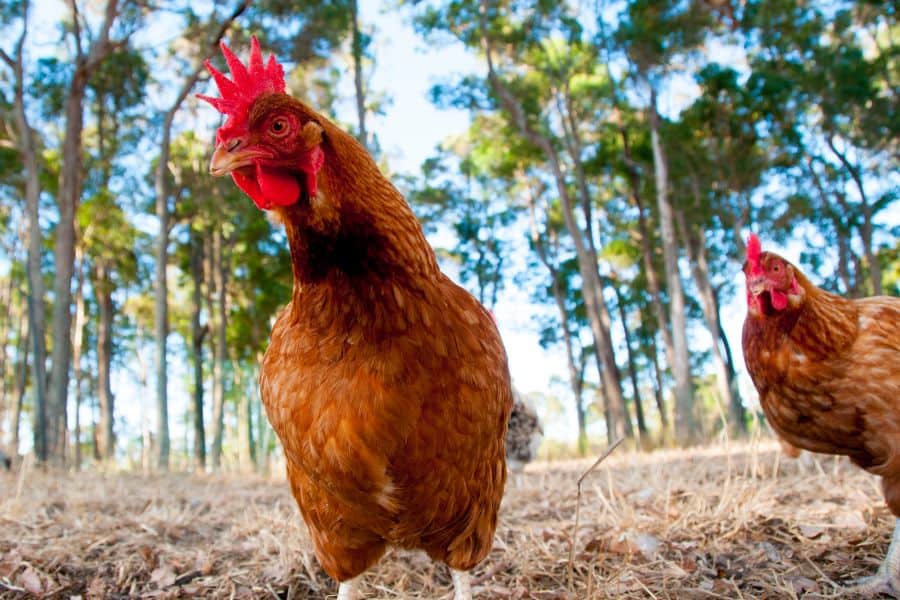Don’t you just love it when your hens give your fresh, nutritious eggs?
Whether you are raising chickens for home or commercial egg production, it’s crucial to select the best egg-laying chicken breeds to enjoy incredible rewards.
But this can seem impossible if you don’t know where to start. Because there are many egg-laying chicken breeds in the market, find the one that suits your needs might require more time and research.
The good news is this comprehensive guide has your needs in mind. Here, we’ve presented you with the best of the best egg-laying chicken breeds out there. Stick with us as we discuss these lovely breeds.
What to Consider When Selecting an Egg-Laying Chicken Breed
Choosing a chicken breed that suits your tastes depends on several attributes. Keep in mind that every chicken farmer has varied tastes and preferences in relation to the chicken they want to keep.
Therefore, whatever attributes you might desire in your breed of choice might differ from another poultry farmer.
The list below highlights several factors poultry farmers and enthusiasts consider when picking a good-laying chicken breed.
Quantity of Eggs
It’s no secret! Certain chicken breeds lay more eggs than others. Some can give you up to five eggs a week, while others might provide at least two eggs weekly.
If you’re a beginner, you can pick a moderate egg layer to start you off before proceeding to chickens with higher yields.
Hardiness
Another thing worth considering is hardiness. This is because it determines the ability of a bird to withstand certain climate conditions.
Hardy chicken breeds can live in areas with harsh weather conditions, be it extremely cold or hot, and still meet your need for eggs.
So, if you live in such areas, it’s vital to find a breed that can thrive with minimal care and maintenance. This way, you can enjoy egg production all year round.
Egg Size
Egg size may not seem like an important factor, but some chicken farmers would consider it when picking a breed to raise. If you prefer large eggs, there are breeds for that and vice versa.
Broodiness
Broodiness is when your chicken wants to hatch a clutch. A broody hen doesn’t lay eggs. This could be disadvantageous if you were looking for year-round egg production.
In such a case, pick a breed with lower chances of becoming broody.
Egg Color
While it isn’t high on the list of considerations, everyone enjoys having multicolored eggs. Colored eggs add a sense of aesthetics to your egg basket and might attract more customers to your shop (that’s if you sell the eggs).
Most egg-laying breeds lay brown or white eggs, but some, like the Ameraucana, produce blue eggs. On the other hand, the Olive Egger breed will give you olive-green eggs.
We also have green, pink, chocolate-brown, and cream eggs. But remember, even if a chicken breed is popular for producing colored eggs, that might not be the case every time.
Top Breeds That Lay the Most Eggs
1. Rhode Island Red
- Beginner Friendly: Yes
- Egg Production: 250 – 300 eggs per year
- Egg Size: Medium
- Egg Color: Brown
The Rhode Island Red chicken is one of the most popular breeds among chicken enthusiasts. Whichever breed you pick, whether it is the genetically modified breed or the heritage breed, both are amazing egg layers.
This dual-purpose breed can survive in most climates. They’re also good at coexisting with other chicken breeds but can become very dominant and assertive about their space. Thus, if you plan to keep them in a mixed flock, avoid housing them with timid or docile breeds.
The Rhode Island Red begins laying eggs at around 18-24 weeks, giving you about 4 eggs (heritage breed) to 6 eggs (industrial) a week.
They’re also excellent foragers and require ample space to keep them from getting bored.
2. White Leghorn
- Beginner Friendly: No
- Egg Production: 280-300 eggs per year
- Egg Size: Medium
- Egg Color: White
With its shiny red comb and pristine white feathers, the White Leghorn is quite an attractive breed. They’re also reliable egg layers starting at 16-17 weeks of age, giving you about 4-6 eggs every week.
Although hardy and independent, white leghorns are not highly recommended for beginners. That is because they’re difficult to tame and quite flighty. They also do not enjoy being handled frequently and shy away from humans.
If your focus is mainly on egg production capabilities rather than petting or playing with your chickens, the white leghorns are a good way to go.
3. Australorp
- Beginner Friendly: Yes
- Egg Production: 250+ eggs a year
- Egg Size: Large
- Egg Color: Pinkish brown to Light brown
Holding the world record as the top egg layer in a year (364 eggs annually), the Australorps are among the easiest breeds to keep. Originating from Australia, Australorps were bred from Orpingtons.
Whether you pick the white, black, or blue Australorp, these stunning birds are climate-hardy, especially in colder regions.
Australorps are docile and quite friendly. That makes them suitable as pets as well. Since they’re a heritage breed, they have quite a long productive lifespan when compared to their hybrid counterparts.
However, no matter how gentle the Australorp is, these chickens are very difficult to raise in a mixed flock. They get very dominant and aggressive, especially toward timid chickens. This results in bullying. Sometimes, they might resort to eating other chickens’ eggs.
4. Buff Orpingtons
- Beginner Friendly: Yes
- Egg Production: 200-250 eggs per year
- Egg Size: Large
- Egg Color: Light brown
Despite their large, fluffy size, Buff Orpingtons are one of the friendliest, most docile breeds out there.
They also rank quite high among dual-purpose breeds because their size makes them excellent meat producers. Plus, their egg-laying capability is top-tier.
Buff Orpingtons are very hardy and enjoy being handled. They love the attention and are downright lap chickens. They’re also low maintenance and have no major health concerns.
These chickens are heavy and would thrive in coops and penned areas. Their weight also makes it a bit difficult to free-range because of their inability to evade predators.
Point to note; Buff Orpingtons brood easily, especially in summer months.
5. Plymouth Rock
- Beginner Friendly: Yes
- Egg Production: 200-220 eggs per year
- Egg Size: Medium
- Egg Color: Light brown
If you’re starting your journey as a chicken farmer, the Plymouth Rock is an excellent breed to begin with. This large, beautiful chicken starts laying at 18-22 weeks old and will give you about 4 to 5 eggs in a week.
Although their production level starts decreasing when they’re about three years old, they make up for it by having a long production age. While most breeds have about 5-7 years of egg production, Plymouths can lay eggs for up to 10 years.
Plymouth Rocks are terrific foragers, making them suitable candidates for free-range. They’re also quite gentle, friendly, and easily tamed, so they make excellent pets.
6. Sussex
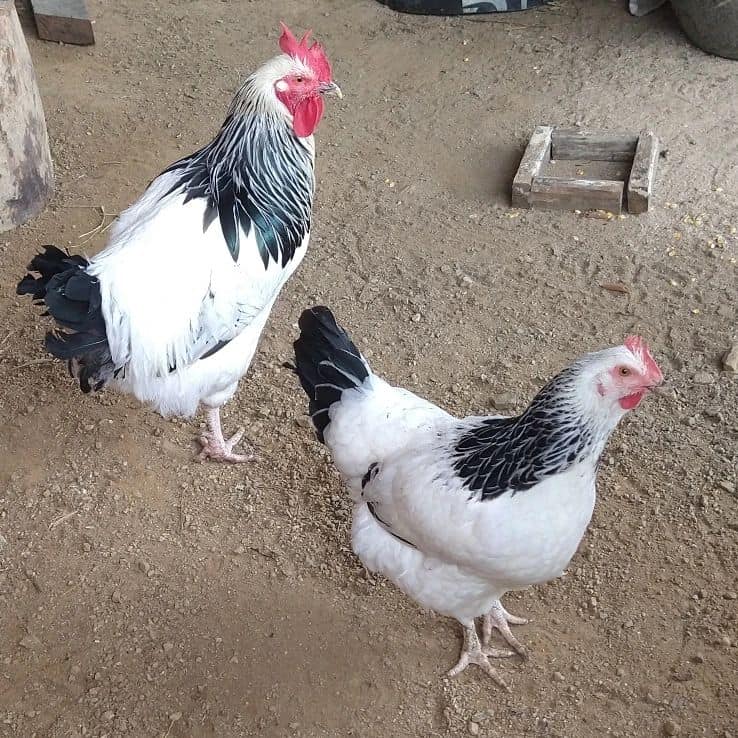
- Beginner Friendly: Yes
- Egg Production: 250-300 eggs per year
- Egg Size: Large
- Egg Color: Brown
These beautiful chickens, originating from Sussex, England, are prolific layers, curious, and love to forage. Due to their origins, this breed is quite cold-hardy and actively lay eggs no matter the season.
Despite their enormous size, Sussex chickens do not require large spaces to rear them. They’re quite tame and tolerant to a bit of handling. They also make great pets.
The Sussex comes in eight colors, with the most popular being the Speckled Sussex.
They start laying anywhere between 16-20 weeks and will give you about 4 or 5 eggs per week.
This docile breed gets along with others. But due to their gentle disposition, they’re frequently targeted by bullies.
The Sussex is a dual-purpose bird that offers about four years of active egg production. However, this breed is known to go broody, especially during spring.
7. Wyandotte
- Beginner Friendly: No
- Egg Production: 200+ eggs per year
- Egg Size: Large
- Egg Color: Brown
Wyandotte (wine-dot) chickens are simply magnificent to look at. Although it was bred specifically to withstand harsh winters, this breed has become quite popular for its aesthetics.
This large, dual-purpose heritage breed has several varieties. The most popular being the silver-laced and the golden-lace.
Wyandotte chickens are docile though less affectionate than most other breeds. These birds start laying at 18 weeks old, giving you 3 to 4 large cream or brown-colored eggs every week.
These chickens are very independent, hardy, and rarely brood. Therefore, if you’re looking for a year-round egg layer, you need this breed.
8. Easter Egger
- Beginner Friendly: No
- Egg Production: 180-200 eggs per year
- Egg Size: Medium or small
- Egg Color: Each hen lays a different color
The Easter Egger isn’t a heritage breed. This hybrid comes from crossing Araucana with Ameraucanas. Araucanas are renowned for their blue eggs, while Ameraucanas are an American breed popular for their blue or olive-green eggs.
Though they’re not high on the egg production scale, they make up for it by laying multicolored eggs, hence, the name Rainbow Chicken.
They start laying at 18-20 weeks, providing about 4 medium-sized eggs weekly. They produce eggs with varying shades, such as green, blue, aqua, olive, or even pink.
Each chicken will lay one color for their entire life. But the more Easter Eggers you have in your flock, the more variety of egg colors you will get. The best part is that they get broody.
Easter Eggers are a hardy breed that does quite well in free-range. They also make good pets because they are friendly and quiet. Moreover, they’re good flyers and roost in high places.
On top of that, their eggs contain very little cholesterol as compared to other eggs.
9. ISA Browns
- Beginner Friendly: Yes
- Egg Production: 300-350 eggs per year
- Egg Size: Medium or Large
- Egg Color: Light brown
Another hybrid worth mentioning is ISA Brown. Bred mainly for egg production, this breed can lay up to 350 eggs annually.
For the first 24 months of their lives, Isa Browns will lay up to 6 eggs a week. Afterward, their egg production reduces to 3 to 4 eggs a week.
It’s also worth mentioning that Isa Browns are one of the few industrial breeds that comfortably transitioned to being backyard chickens.
This hardy breed is content in most climates, reasonably quiet, and rarely flies around. That makes them ideal for any beginner.
They’re also friendly and gentle, which is a plus if you want to integrate them into a flock.
10. Golden Comet
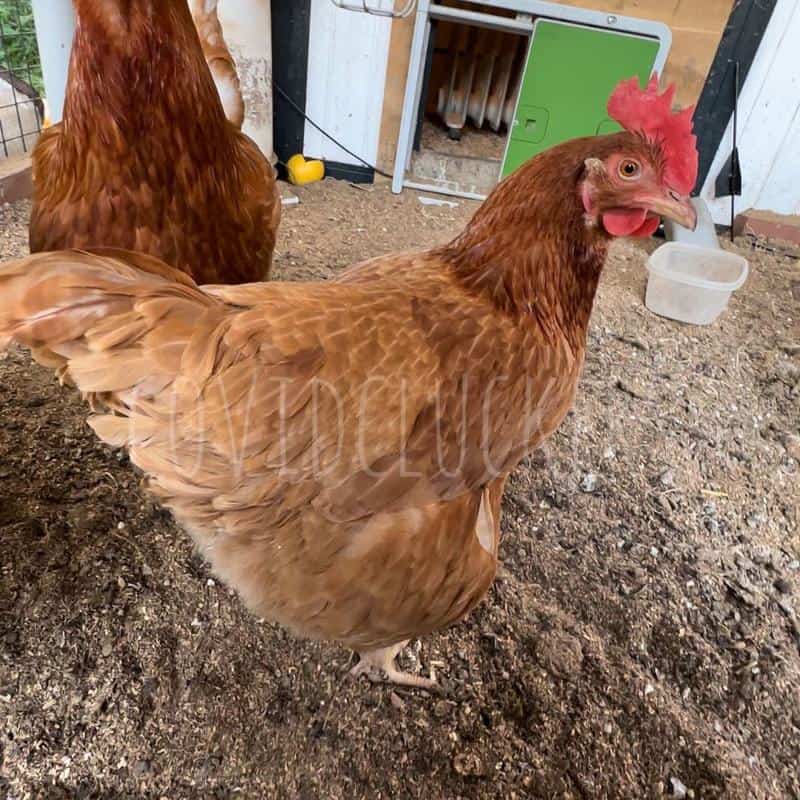
- Beginner Friendly: Yes
- Egg Production: 250-300 eggs per year
- Egg Size: Large
- Egg Color: Brown
The Golden Comet is another commercial sex-linked breed. It is a crossbreed between a New Hampshire Red rooster and a White Rock hen. It was bred specifically for egg production. They mature quickly, and at 15 weeks, they start laying eggs and give you around 5 to 6 eggs in a week.
This breed is not particularly broody. Therefore, you can look forward to year-round egg production. They were also bred to be cold-hardy but can handle extreme climates well.
The Golden Comet is considered easy to look after, and they make great pets due to their easygoing and gentle disposition. This trait also makes them very compatible with other breeds.
The table below provides you with a complete summary of the different chicken breeds we mentioned above.
| Name | Main Use | Annual Egg Production | Weight (Female) | Age they Start Laying | |
| 1. | Rhode Island Red | Eggs, Meat | 250-300 | 6.5lbs | 18-24 weeks |
| 2. | White Leghorn | Eggs, Meat | 280-300 | 5lbs | 16-17 weeks |
| 3. | Australorp Chickens | Eggs, Meat | 250+ | 5-7lbs | 22-24 weeks |
| 4. | Buff Orpington | Eggs, Meat | 200-250 | 6-8lbs | 19-24 weeks |
| 5. | Plymouth Rock | Eggs, Meat | 200-220 | 6.5lbs | 18-22 weeks |
| 6. | Sussex | Eggs, Meat | 250-300 | 8lbs | 16-20 weeks |
| 7. | Wyandotte | Eggs | 200+ | 6lbs | 18 weeks |
| 8. | Easter Egger | Eggs | 180-200 | 5lbs | 18-20 weeks |
| 9. | Isa Browns | Eggs | 300-350 | 6-8lbs | 16-18 weeks |
| 10. | Golden Comet | Eggs | 250-300 | 5-7.5lbs | 15 weeks |
Also Read:
Conclusion
Before we leave, let’s go through a few things we’ve learned today. First, several factors can influence your choice of egg-laying chicken breeds. These include hardiness, egg production ability, and broodiness.
Second, there are several chicken breeds out there that produce delicious eggs, with the best being Rhode Island Red, Plymouth Rock, White Leghorn, and Bugg Orpington.
Provided with a balanced diet, a safe environment, and TLC (tender, love, and care), these layers can promise you a constant egg supply throughout the year.
And the best part? You can form strong bonds with your new feathery friends and enjoy good companionship in the process.
